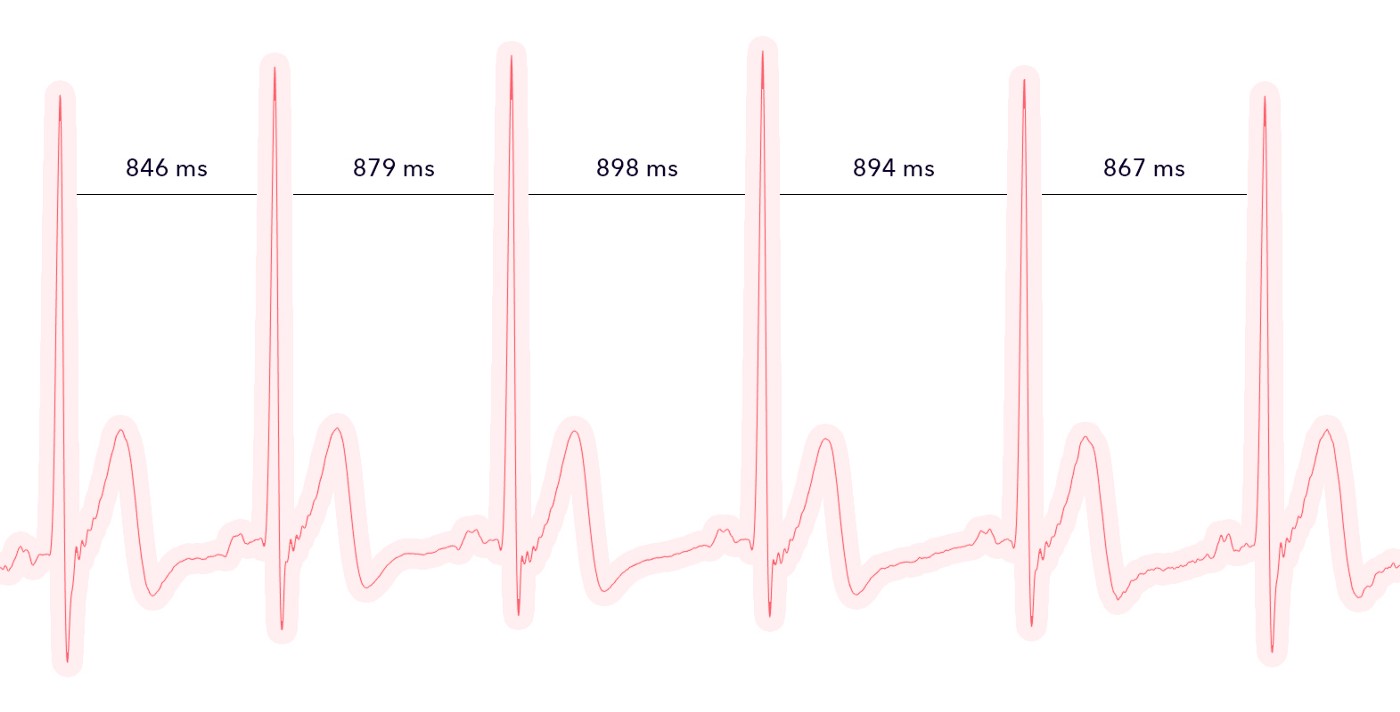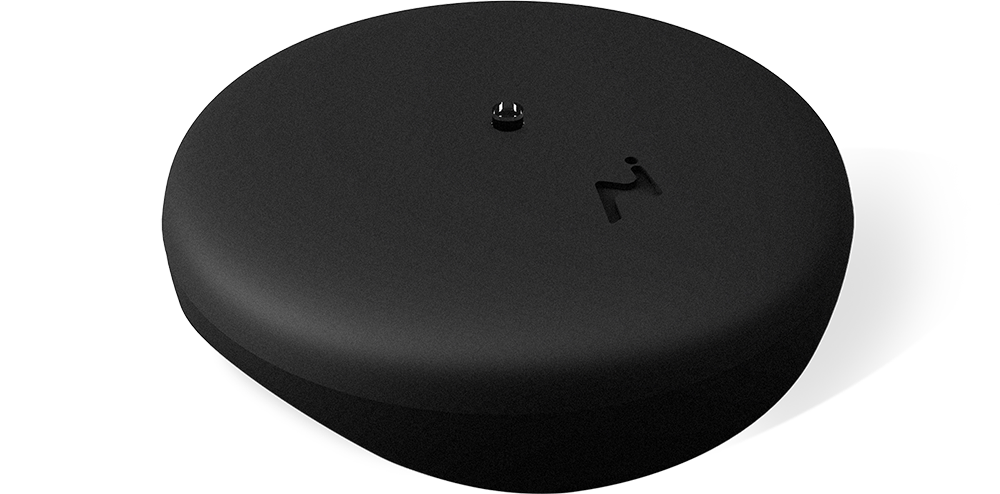Let me start with the basics: HRV is the time difference between the peaks of heartbeats. No more no less.
HRV is a useful information about your health, especially when you’re physically active. It indicates short- and long-term recovery status and condition of your heart. Knowing your HRV helps you estimate your heart’s performance and tell you how well your body is dealing with stress.
So how can you measure it?
Measuring HRV with Electrocardiogram (ECG)
The standard method to determine heart rate variability is using ECG, which shows the electrical activity of your heart. To perform an ECG measurement, you need to have electrodes (a material with good electrical properties) attached to your skin. The closer the electrodes are to your heart, the better.
The resulting signal of your heart is presented in the image below.
 ECG with annotated time difference of signal peaks, known as R-R intervals
ECG with annotated time difference of signal peaks, known as R-R intervals
An ECG taken with electrodes gives the most accurate results. But there are downsides. Motion artifacts, i.e., involuntary movements of a person taking the measurement, can often meddle with results. Also, there’s the dubious comfort aspect of this form of ECG measurement — electrodes are simply burdensome.
Measuring HRV with Photoplethysmography (PPG)
Another method of measuring heart rate variability is through photoplethysmography. Bearing an unpronounceable name, the term, in short, describes optical heart rate monitoring.
Instead of R-R intervals (as in ECG), in PPG we measure interbeat intervals, or IBIs. Each contraction of the heart results in an increase in blood volume, which flows from the bigger arteries toward smaller capillaries. It’s the pulse. The PPG measurement is taken when the blood rushing through the veins absorbs proper wavelengths sent by LEDs attached to a PPG device.
The biggest disadvantage of PPG compared to ECG is the lower accuracy of measured signal, which might have a significant impact on the HRV analysis.
Challenges in Heart Rate Variability Tracking
To get accurate results, ECG and PPG devices should be firmly attached to your body for longer periods of time. Next thing is the regularity. The data collected by the devices is much more valuable when the measurement is taken during periods of rest and exercise or stress.
The HRV measurement is highly sensitive to what happens in your body and the surrounding environment. It also makes a difference how much HRV data you have to draw conclusions from. A five-minute snapshot is not the same as periodic averages taken throughout the night.
Standardizing Measurement Conditions
As you already know, HRV is a very sensitive measurement, and it should be taken in standardized conditions:
- At the right time of day (prior-activity or upon waking).
- With people emotionally neutral to you so that your heartbeat isn’t affected by someone’s presence.
Wearing Comfort
For a person who cares about health, the wearing comfort of a device seems less important. But considering the above challenges, it’s quite the opposite.
The more comfortable the device, the better the experience. Plus, there’s a higher possibility that you will wear the device for longer periods of time, allowing it to take more accurate measurements. High wearing comfort also ensures that your movements aren’t restricted, and you can wear the device while performing various activities.
Knowing the challenges and seeking accuracy, we’ve taken the best of the ECG Holter monitor and included it all in a small but sturdy device — Aidlab.

While wearing it on a chest strap or attaching to smart t-shirts available on the market, you can run and work out as much as you want without worrying about motion artifacts. The device is designed to work under the harsh and sweaty conditions of muscles moving around it.


